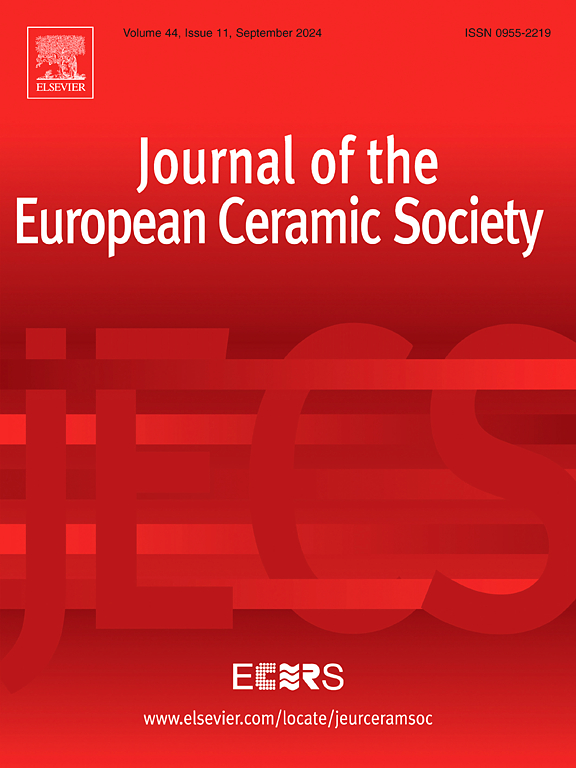3D-printable scaffolds via DIW from ceramic pastes of ZnO nanoparticles without organic binders and their application as reusable photocatalysts for the degradation of Bisphenol A
IF 5.8
2区 材料科学
Q1 MATERIALS SCIENCE, CERAMICS
Journal of The European Ceramic Society
Pub Date : 2025-05-29
DOI:10.1016/j.jeurceramsoc.2025.117578
引用次数: 0
Abstract
Direct ink writing (DIW) is an efficient and cost-effective additive manufacturing technique for fabricating ceramic architectures. Zinc oxide nanoparticles (ZnO_NP) are promising photocatalysts due to their chemical stability, low toxicity, and high efficiency. However, the development of DIW-printable ZnO_NP-based pastes remains limited. This work presents the first systematic study to successfully develop 3D-printable ZnO_NP-based ceramic pastes (63 wt% solids) without organic binders. A solvent:co-solvent system (deionized water:ethylene glycol) and silica nanoparticles as inorganic binders enabled the fabrication of robust and self-supporting ZnO_NP-based scaffolds under an optimal formulation window. The photocatalytic potential was demonstrated through Bisphenol A degradation, achieving 95–85 % degradation over successive cycles, including post-reactivation. Unlike conventional powder-based photocatalysts, 3D-printed scaffolds allow efficient recovery and reuse, offering a sustainable alternative for environmental remediation. This novel approach pioneers DIW-printable ZnO_NP-based pastes without organic binders, paving the way for future advancements in photocatalytic applications and additive manufacturing of functional ceramics.
无有机粘合剂的ZnO纳米颗粒陶瓷糊状物的DIW 3d打印支架及其作为降解双酚A的可重复使用光催化剂的应用
直墨书写(DIW)是一种高效、经济的陶瓷结构增材制造技术。氧化锌纳米颗粒(ZnO_NP)具有化学稳定性好、毒性低、效率高等优点,是一种很有前途的光催化剂。然而,基于zno_np的diw可打印浆料的开发仍然有限。这项工作提出了第一个系统的研究,成功地开发了3d打印的zno_np基陶瓷糊状物(63 wt%固体),没有有机粘合剂。溶剂:共溶剂体系(去离子水:乙二醇)和二氧化硅纳米颗粒作为无机粘合剂,在最佳配方窗口下制备了坚固且自支撑的zno_np基支架。通过双酚A降解证明了光催化潜力,在连续的循环中达到95-85 %的降解,包括后活化。与传统的粉末基光催化剂不同,3d打印支架允许有效的回收和再利用,为环境修复提供了可持续的替代方案。这种新颖的方法开创了无有机粘合剂的diw打印zno_np基浆料,为光催化应用和功能陶瓷增材制造的未来发展铺平了道路。
本文章由计算机程序翻译,如有差异,请以英文原文为准。
求助全文
约1分钟内获得全文
求助全文
来源期刊

Journal of The European Ceramic Society
工程技术-材料科学:硅酸盐
CiteScore
10.70
自引率
12.30%
发文量
863
审稿时长
35 days
期刊介绍:
The Journal of the European Ceramic Society publishes the results of original research and reviews relating to ceramic materials. Papers of either an experimental or theoretical character will be welcomed on a fully international basis. The emphasis is on novel generic science concerning the relationships between processing, microstructure and properties of polycrystalline ceramics consolidated at high temperature. Papers may relate to any of the conventional categories of ceramic: structural, functional, traditional or composite. The central objective is to sustain a high standard of research quality by means of appropriate reviewing procedures.
 求助内容:
求助内容: 应助结果提醒方式:
应助结果提醒方式:


